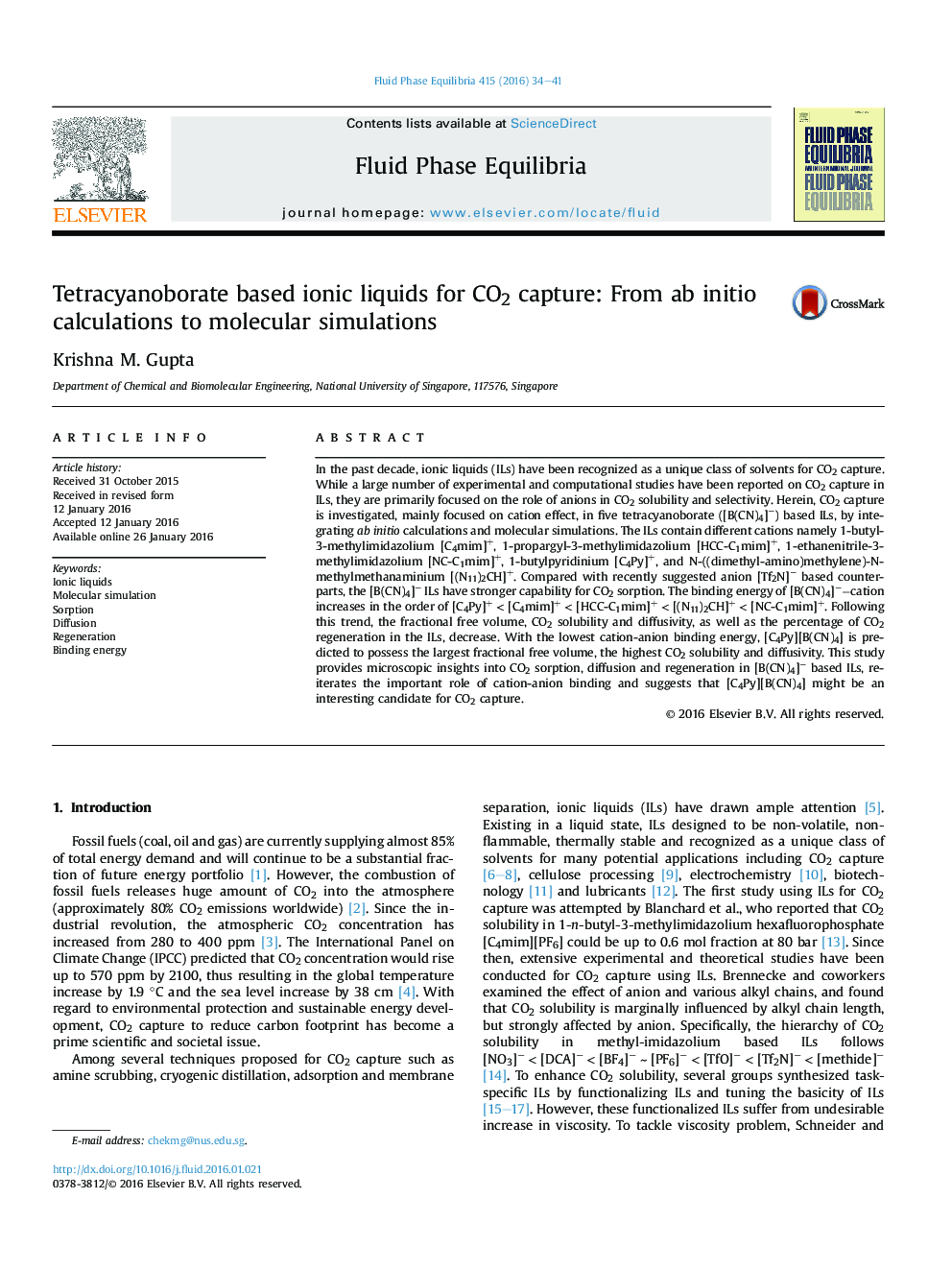| Article ID | Journal | Published Year | Pages | File Type |
|---|---|---|---|---|
| 200600 | Fluid Phase Equilibria | 2016 | 8 Pages |
•[C4Py][B(CN)4] is a potential candidate to capture CO2. .•Cation-anion binding energy plays a key role to govern CO2 solubility in ILs. .•CO2 solubility and diffusivity increase with fractional free volume of ILs. .•CO2 regeneration also depends on cation-anion interaction.
In the past decade, ionic liquids (ILs) have been recognized as a unique class of solvents for CO2 capture. While a large number of experimental and computational studies have been reported on CO2 capture in ILs, they are primarily focused on the role of anions in CO2 solubility and selectivity. Herein, CO2 capture is investigated, mainly focused on cation effect, in five tetracyanoborate ([B(CN)4]−) based ILs, by integrating ab initio calculations and molecular simulations. The ILs contain different cations namely 1-butyl-3-methylimidazolium [C4mim]+, 1-propargyl-3-methylimidazolium [HCC-C1mim]+, 1-ethanenitrile-3-methylimidazolium [NC-C1mim]+, 1-butylpyridinium [C4Py]+, and N-((dimethyl-amino)methylene)-N-methylmethanaminium [(N11)2CH]+. Compared with recently suggested anion [Tf2N]− based counterparts, the [B(CN)4]− ILs have stronger capability for CO2 sorption. The binding energy of [B(CN)4]−−cation increases in the order of [C4Py]+ < [C4mim]+ < [HCC-C1mim]+ < [(N11)2CH]+ < [NC-C1mim]+. Following this trend, the fractional free volume, CO2 solubility and diffusivity, as well as the percentage of CO2 regeneration in the ILs, decrease. With the lowest cation-anion binding energy, [C4Py][B(CN)4] is predicted to possess the largest fractional free volume, the highest CO2 solubility and diffusivity. This study provides microscopic insights into CO2 sorption, diffusion and regeneration in [B(CN)4]− based ILs, reiterates the important role of cation-anion binding and suggests that [C4Py][B(CN)4] might be an interesting candidate for CO2 capture.
